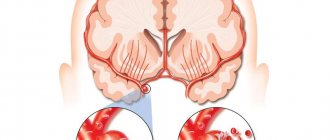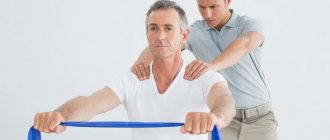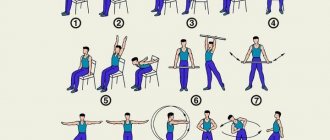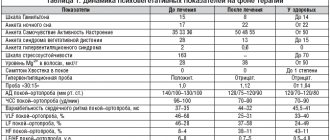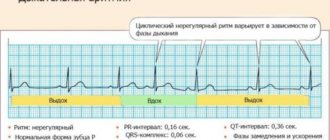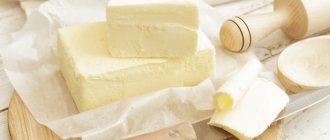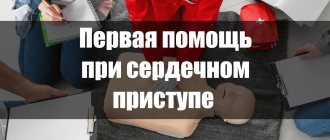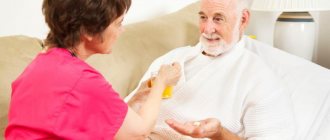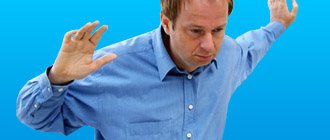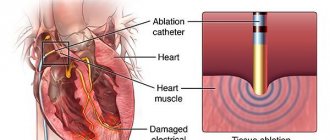Contraindications to massage are divided into absolute, temporary and local. In case of absolute contraindications, massage is completely prohibited, and temporary ones are valid until the problem gets rid of. In case of local contraindications, massage can be performed, but certain areas of the body must be avoided.
Temporary contraindications to massage
In some situations, the patient does not need to completely abandon the massage; it is enough to reschedule the session to a more favorable time.
This applies to the following cases:
- — Skin diseases, including allergic and fungal manifestations
- — Bleeding (including nosebleeds) and elevated body temperature
- — Blood pressure instability and heart pain
- — Pregnancy (for general massage and therapeutic back massage)
- — Infectious diseases in the acute stage
- — Fresh tattoo in the area of massage
- - First few days of the menstrual cycle
- — The period immediately after suffering from acute respiratory viral infections and influenza. You must wait 3-7 days so that the body has time to recover
- - Alcohol intoxication - with it, massage not only becomes ineffective (due to a reduced humoral response), but also leads to an atypical vascular reaction (there is a risk of a sharp drop in pressure).
You should go for a massage 1.5 hours after eating
Techniques and methods of massage for diseases of the cardiovascular system
Hypertonic disease
Before a massage session, it is necessary to measure your blood pressure: you can start procedures only when it is normal. The massage is performed in a sitting position, and begins in the collar area, first with light stroking, then by rubbing the corners of the shoulder blades and shoulder girdles, and ends with a massage of the neck in front.
Hypotonic disease
The main feature of massage procedures for hypotension is that they are performed energetically, using vibration or shock techniques. They are carried out with the patient lying on his stomach, and the main areas of influence are the sacrum and the area of the iliac bones. In addition, in case of hypotension, abdominal massage, carried out by longitudinal and transverse kneading, rolling and sawing, has a very good effect.
Heart disease
For heart defects, the main areas to be massaged are the chest, back, upper and lower extremities. As for the technique, it largely depends on the clinical picture of the disease. For example, in case of circulatory insufficiency of degrees I and II, the main objects of influence of massage therapists are the limbs, and if blood circulation is normal, then the left scapular area is massaged, both from the chest and from the back.
Obliterating endarteritis
For patients suffering from this disease, massage is performed in areas such as the pelvic region, lower back and back. If the disease is diagnosed in the first or second stages, then the procedures are performed with the patient lying on his back or stomach. The session begins with stroking the back or abdomen up to the head, continues with squeezes and double ring kneading. The lower limbs are also massaged, which must be bent at the knees during the procedure. For this, concentric and spiral stroking is used.
Vegetovascular dystonia
For patients suffering from this disease, procedures are best performed in the morning. The best position for this is lying on your stomach. The effects begin by stroking the neck and back of the head from the crown down, and continue with intensive rubbing of the cervical spine in circular and spiral movements.
Absolute contraindications
If there are contraindications from the list below, massage is harmful, as it increases blood circulation and lymph flow, which will only harm the body
Massage taboo:
- — Flu, ARVI, tonsillitis, any acute inflammatory processes
- — Blood diseases, internal bleeding
- — Malignant neoplasms and tumors
- — Purulent processes of any localization
- — Scurvy
- — Osteomyelitis
- — Complicated forms of varicose veins: thrombosis, thrombophlebitis and trophic ulcers, any acute inflammation of blood and lymphatic vessels
- — Aneurysm of the aorta and heart, acute myocardial ischemia
- — Pulmonary heart failure of the third degree
- — Hyper- and hypotonic crisis
- — Diseases of the abdominal organs with a tendency to bleeding
- — Active form of tuberculosis
- — Kidney and liver failure
- - Venereal diseases
- - Mental illness with excessive agitation and significantly altered psyche.
More detailed information is in the following video:
When is massage dangerous?
In clinics and hospitals, health centers and sanatoriums, massage is the most popular procedure that is both desired and demanded. But it's not suitable for everyone.
Massage is a dosed mechanical effect on the surface of the human body. It is carried out by hand or using special devices. In general, the whole body is massaged; local affects the back, collar area, arm. According to the purpose, massage is distinguished as hygienic, therapeutic, sports, and cosmetic.
Basic techniques - kneading, rubbing, stroking, vibration - activate metabolism, soothe or, on the contrary, tone muscles, improve blood and lymph circulation, relieve inflammation in joints, and warm up ligaments. In this sense, massage is an important part of therapy for many diseases.
However, there are many examples where it is even dangerous. The effect of a drug that slows down the blood clotting process will be weakened by any type of massage that activates blood circulation, say researchers Ya. Sayger, D. Kail-Brown.
Contraindications for prescribing therapeutic massage
1. For general massage:
- acute febrile conditions, inflammatory and purulent process of any localization, high temperature;
- bleeding and tendency to it, scurvy;
- pathology of the skin, nails, scalp, as well as damage, irritation, abrasions and cracks;
- inflammation of the veins, significant varicose veins with trophic disorders, thrombosis;
- acute pain and causalgia;
- respiratory diseases (after which you cannot massage for another 5 days);
- active form of tuberculosis;
- inflammation of the lymphatic vessels, painful nodes adherent to the skin and underlying tissues;
- acute venereal diseases, AIDS;
- angiitis, angioneurosis, atherosclerosis of the arteries of the legs with trophic disorders, gangrene;
- mental illness with agitation and altered psyche;
- systemic blood diseases, hemophilia, benign and malignant tumors of various locations (for uterine fibroids without surgical treatment, massage of the collar area, arms, legs and feet is allowed);
- aneurysms of cerebral, cardiac, aortic, peripheral vessels, stage 3 cerebral circulatory insufficiency, severe sclerosis of cerebral vessels with a tendency to thrombosis and hemorrhage;
- acute periods of hypertensive or hypotensive crisis, myocardial ischemia, bronchiectasis in the stage of tissue disintegration, pulmonary heart failure of the 3rd degree, pulmonary edema, pulmonary embolism;
- exacerbation of diseases of the autonomic nervous system (gangliolitis, diencephalic crisis);
- allergies with hemorrhagic and other rashes, skin hemorrhages, Quincke's edema;
- general severe conditions due to various diseases and injuries, osteomyelitis;
- diseases of the female genital area, abdominal organs with a tendency to bleeding (ulcer);
- injuries;
- alcohol intoxication.
2. To massage individual parts of the body:
- on damaged areas of the skin with allergic rashes;
- in areas of dilated or bulging veins, trophic changes in the skin, previous phlebitis or thrombophlebitis without a tendency to relapse. But in the latter cases, you can massage the lumbosacral region (segmental reflex effect);
- avoid moles, warts, protruding above the skin, skin rashes due to psoriasis, eczema, neurodermatitis, herpes;
- for any disease of the mammary glands. However, it is advisable to massage the breasts without touching the nipples for nursing mothers in the early stages after childbirth - milk comes in faster;
- during pregnancy, after childbirth, 2 months after an abortion, you should not massage the abdomen, lumbar region and hips,
- You cannot massage places where there are benign tumors (lipoma, hemangioma, etc.), distant areas can be done using a gentle technique and only according to indications;
- massage is prohibited where there was previously a malignant tumor. If there are no metastases, it is resolved in children - 2 years after surgery, in adults - after 5 years;
- massage of the anterior surface of the chest is contraindicated for mastopathy; After removal of the mammary gland due to a malignant tumor, swelling of the arm appears as a complication. You can immediately massage your hand using a gentle, “suction” technique. Do not touch the chest;
- massage of the lumbar region and abdomen is excluded in case of ovarian cysts, fibroids, uterine fibroids, endometriosis, prostate adenoma;
- It is not recommended to massage the abdomen if there is a hernia (allowed only in infants), or during normal menstruation;
- if a person has stones in the gall bladder and urinary tract, then any manipulations on the abdomen and lumbar region are excluded.
The massage therapist should not increase the duration and number of sessions without the consent of the doctor, or change the area of influence. It is necessary to listen to any complaints of the patient and send him to the doctor for a consultation, under no circumstances continuing the course of procedures.
Local contraindications
If there are contraindications from this list, massage can be done, but you need to avoid a certain area:
- — Abrasions, allergic rashes and wounds, fresh tattoos
- - Moles, nevi and warts. Massage is allowed in areas where moles do not protrude above the surface of the skin, that is, without touching them. If moles are large, located throughout the body, and cannot be avoided during massage, then this feature is considered an absolute contraindication.
- - Menstrual cycle. The massage therapist avoids impacting the abdominal area, and in the first few days, impacting the lower back
Local contraindications for acute and chronic diseases:
- - Hernia. Correction of an umbilical hernia using massage is allowed only in infants; in adults it is removed surgically
- — Stones in the gall bladder, liver and kidneys. In this case, massage in the abdominal area is prohibited.
- — Diseases of the mammary glands. Massaging this area of the body is strictly prohibited, including for mastopathy.
- - Psoriasis. It is forbidden to influence psoriatic rashes, as their number may increase
- - Endoarteritis. The feet and the area below the knee are excluded from the impact sites: narrowing of blood vessels can lead to tissue death due to increased blood flow
- - Trophic ulcers. Gentle massage is allowed in the early stages of the disease. When sclerotization of peripheral vessels occurs, feet with ulcers are not treated
- — Pregnancy, recent childbirth (up to 2 months) or recent abortion are contraindications for abdominal massage
- - Benign tumors. For neoplasms of the reproductive sphere (prostate adenoma, uterine fibroids, ovarian cysts), it is necessary to avoid the abdomen and lower back areas. Restrictions remain even after removal of tumors; the specialist will avoid the area where surgery was performed.
If there has been skin irritation or itching on some part of the body for a long time, this should also be avoided during massage.
These symptoms may indicate the onset of a disease that the patient is not yet aware of.
A set of exercises for children from 10-15 days of life to 3 months of age:
- Stroking hands (4-6 times)
- Stroking legs (4-6 times)
- Laying on the stomach
- Back massage (4-6 times)
- Abdominal massage (6-8 times)
- Reflex crawling
- Massage and reflex exercises for the feet. (3-4 times).
As the child grows, new elements are added to the daily set of exercises, and the time of the procedure increases. Your pediatrician and nurse masseuse will tell you more about massage and gymnastics techniques.
Improper, uncertain execution of techniques can cause discomfort in the child and cause harm instead of benefit. Therefore, before you start giving massage and gymnastics to your baby yourself, consult a specialist.
Contraindications to facial massage
For facial massage, the list of contraindications is shorter:
- — Acute inflammatory processes in the oral cavity and sinuses (acute sinusitis, sinusitis, rhinitis, stomatitis, gingivitis, carious mouth)
- — Herpes
- — Acne above grade 2 (inflammatory elements more than 10 pieces) or furunculosis
- — The period after deep peelings and cleansing (up to 1 month)
- — Oncology.
Facial massage is not recommended after Botox and other injections, and installation of gold threads
Effects of classic massage
Stimulation of nerve endings, muscles, blood vessels allows you to achieve many positive effects:
- normalization of muscle tone;
- restoration of normal elasticity of tissues - ligaments, muscles, tendons;
- elimination of cramps and muscle spasms;
- increasing the overall tone of the body;
- normalization of blood circulation and lymph flow;
- relaxation after stress, positive psycho-emotional effect;
- restoration of body contours and reduction of subcutaneous fat volume;
- reduction of swelling;
- strengthening the muscle corset;
- improving the mobility of joints and vertebrae, restoring normal range of motion.
Thanks to a general classical massage, it is possible to speed up recovery and recovery from injuries, improve the body’s own defenses, relieve tension, and get rid of chronic pain and dizziness.
The positive effect of massage on the skin is known: it is cleansed of dead cells, moisturized, and becomes more elastic and firm. The protective properties of the skin and resistance to infectious agents and allergens increase.
When combining massage with other therapeutic methods, it is possible to achieve impressive results, speed up recovery and tissue regeneration. Massage can be supplemented with physical therapy, visiting the pool, diet therapy, and medication methods for treating many diseases.
Classic massage techniques
A classic massage session involves working only with the hands of a specialist. He can use the following techniques and techniques:
- stroking. This is the beginning of the session, it is important to prepare the tissues for deeper treatment and relax the muscles. The technique is designed to reduce pain, relax muscles and achieve the desired psycho-emotional state, increase tissue elasticity;
- trituration. This technique is necessary to improve blood supply to the treated area. It allows you to improve the outflow of lymph and stimulate rapid recovery. Demonstrates good results in cases of trauma, neuralgia, radiculitis;
- kneading. Represents gentle squeezing, pulling, and grasping of the skin. The intake effectively copes with swelling and congestion, stimulates regeneration by increasing the flow of oxygen and nutrients. You can call this technique passive gymnastics for the muscles;
- vibration. Oscillatory movements of different amplitudes: chopping, tapping, patting. The techniques are designed to stimulate the neuromuscular system, strengthen reflexes, and are used for various sensitivity disorders.
Classic medical massage does not imply ready-made solutions and schemes - a set of techniques and techniques is determined by a specialist taking into account the patient’s diagnosis, his condition, complaints, and concomitant diseases. Some techniques require repetition up to 4-5 times to obtain the desired result. The course can include up to 10–15 sessions, their number and duration (from 30 to 90 minutes) are determined individually.
